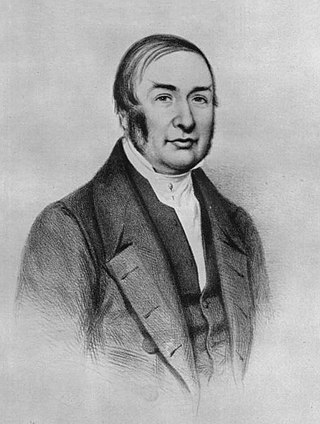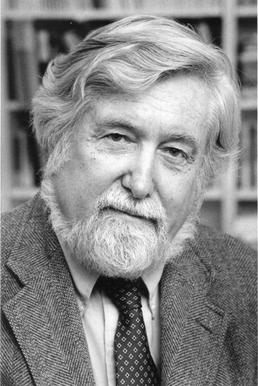
Hypnosis is a human condition involving focused attention, reduced peripheral awareness, and an enhanced capacity to respond to suggestion.
Hypnotherapy is a type of mind–body intervention in which hypnosis is used to create a state of focused attention and increased suggestibility in the treatment of a medical or psychological disorder or concern. Popularized by 17th and 18th century psychologists such as James Braid and Milton H. Erickson.

Pseudoscience consists of statements, beliefs, or practices that claim to be both scientific and factual but are incompatible with the scientific method. Pseudoscience is often characterized by contradictory, exaggerated or unfalsifiable claims; reliance on confirmation bias rather than rigorous attempts at refutation; lack of openness to evaluation by other experts; absence of systematic practices when developing hypotheses; and continued adherence long after the pseudoscientific hypotheses have been experimentally discredited.

James Braid was a Scottish surgeon, natural philosopher, and "gentleman scientist".
Autosuggestion is a psychological technique related to the placebo effect, developed by apothecary Émile Coué at the beginning of the 20th century. It is a form of self-induced suggestion in which individuals guide their own thoughts, feelings, or behavior. The technique is often used in self-hypnosis.

Science studies is an interdisciplinary research area that seeks to situate scientific expertise in broad social, historical, and philosophical contexts. It uses various methods to analyze the production, representation and reception of scientific knowledge and its epistemic and semiotic role.
Self-hypnosis or auto-hypnosis is a form, a process, or the result of a self-induced hypnotic state.

Clifford James Geertz was an American anthropologist who is remembered mostly for his strong support for and influence on the practice of symbolic anthropology and who was considered "for three decades... the single most influential cultural anthropologist in the United States." He served until his death as professor emeritus at the Institute for Advanced Study, Princeton.
In philosophy of science and epistemology, the demarcation problem is the question of how to distinguish between science and non-science. It examines the boundaries between science, pseudoscience and other products of human activity, like art and literature and beliefs. The debate continues after over two millennia of dialogue among philosophers of science and scientists in various fields. The debate has consequences for what can be called "scientific" in fields such as education and public policy.
The Nancy School was a French hypnosis-centered school of psychotherapy. The origins of the thoughts were brought about by Ambroise-Auguste Liébeault in 1866, in Nancy, France. Through his publications and therapy sessions he was able to gain the attention/support from Hippolyte Bernheim: another Nancy Doctor that further evolved Liébeault's thoughts and practices to form what is known as the Nancy School.
Suggestion is the psychological process by which a person guides their own or another person's desired thoughts, feelings, and behaviors by presenting stimuli that may elicit them as reflexes instead of relying on conscious effort.
The development of concepts, beliefs and practices related to hypnosis and hypnotherapy have been documented since prehistoric to modern times.
Hypnosurgery is surgery where the patient is sedated using hypnotherapy rather than traditional anaesthetics. It is claimed that hypnosis for anaesthesia has been used since the 1840s where it was pioneered by the surgeon James Braid. There are occasional media reports of surgery being conducted under hypnosis, but since these are not carried out under controlled conditions, nothing can be concluded from them.
Thomas F. Gieryn is Rudy Professor of Sociology at Indiana University. He is also the Vice Provost of Faculty and Academic Affairs. In his research, he focuses on philosophy and sociology of science from a cultural, social, historical, and humanistic perspective. He is known for developing the concept of "boundary-work," that is, instances in which boundaries, demarcations, or other divisions between fields of knowledge are created, advocated, attacked, or reinforced. He has served on many councils and boards, including the Advisory Board of the exhibition on "Science in American Life" by the Smithsonian's National Museum of American History. He retired in 2015 from his professorship at Indiana University.
Deirdre Barrett is an American author and psychologist known for her research on dreams, hypnosis and imagery, and has written on evolutionary psychology. Barrett is a teacher at Harvard Medical School, and a past president of the International Association for the Study of Dreams and of the American Psychological Association’s Div. 30, the Society for Psychological Hypnosis. She is editor-in-chief of the journal Dreaming: The Journal of the Association for the Study of Dreams and a consulting editor for Imagination, Cognition, and Personality and The International Journal for Clinical and Experimental Hypnosis.

Hypnotic induction is the process undertaken by a hypnotist to establish the state or conditions required for hypnosis to occur.

The ideomotor phenomenon is a psychological phenomenon wherein a subject makes motions unconsciously. Also called ideomotor response and abbreviated to IMR, it is a concept in hypnosis and psychological research. It is derived from the terms "ideo" and "motor". The phrase is most commonly used in reference to the process whereby a thought or mental image brings about a seemingly "reflexive" or automatic muscular reaction, often of minuscule degree, and potentially outside of the awareness of the subject. As in responses to pain, the body sometimes reacts reflexively with an ideomotor effect to ideas alone without the person consciously deciding to take action. The effects of automatic writing, dowsing, facilitated communication, applied kinesiology, and ouija boards have been attributed to the phenomenon.
Animal magnetism, also known as mesmerism, was a protoscientific theory developed by German doctor Franz Mesmer in the 18th century in relation to what he claimed to be an invisible natural force (Lebensmagnetismus) possessed by all living things, including humans, animals, and vegetables. He claimed that the force could have physical effects, including healing. He tried persistently, without success, to achieve a wider scientific recognition of his ideas.
A non-science is an area of study that is not scientific, especially one that is not a natural science or a social science that is an object of scientific inquiry. In this model, history, art, and religion are all examples of non-sciences.

A conversazione is a "social gathering [predominantly] held by [a] learned or art society" for conversation and discussion, especially about the arts, literature, medicine, and science.








